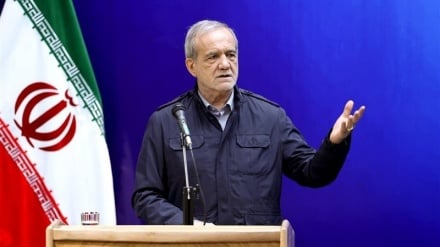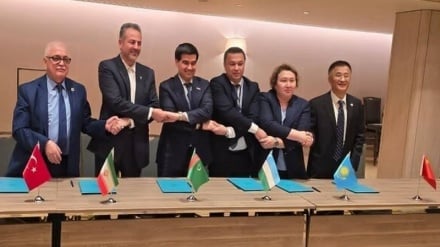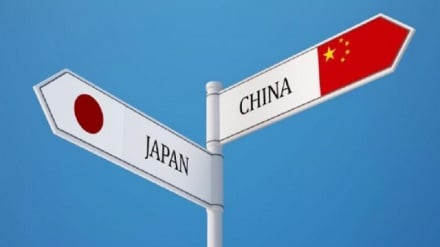China reaching deeper and deeper into Nepal
A planned Himalayan railway connecting China to Nepal will give the landlocked latter nation a vital new trade route but also stir security concerns in neighboring India.
Here we present you an interesting feature by political analyst, Bertil Lintner published in Asia Times, titled “China reaching deeper and deeper into Nepal”.
“The Night Train to Kathmandu”, a 1988 surrealistic American movie set against the backdrop of the Himalayas, mixed fantasy and reality as a young woman traveled from India to the Nepalese capital in search of a non-existent city above the clouds.
Of course, at that time there were no railroads in Nepal apart from a few, short tracks across the Indian border into the famously mountainous country’s southern lowlands. Now, however, Kathmandu will for the first time in its history soon have a rail connection over the Himalayas in the north linking to China.
In 2005, China completed the construction of a 1,956-kilometer railroad connecting Xining in northwestern Qinghai province with Lhasa, the capital of the Tibet Autonomous Region that borders on Nepal. In 2014, an extension to Xigaze, 270 kilometers to the southwest of Lhasa was opened.
In June this year, China and Nepal signed several agreements, including one to extend the same railroad an additional 270 kilometers from Xigaze to Kathmandu. Construction is expected to start after a survey is conducted and the line completed by 2024.
There are also talks about extending the envisioned railroad further south to the Indian border. Lumbini, the birthplace of the Buddha in southern Nepal, has been mentioned as a symbolic final station for the proposed track.
But a railroad reaching from Tibet in China to southern Nepal on the Indian border would be more symbolic and significant than simply providing more convenient travel for Chinese tourists, traders and pilgrims to Nepal.
Beijing’s long-term plan under its Belt and Road Initiative (BRI) appears to link up with India’s railroads to reach Bangladesh and its ports on the Bay of Bengal. That may be a non-starter given India’s concerns about China’s grand designs for the region, but is nonetheless on Beijing’s drawing board.
The ambitious scheme, outlined in a detailed report published in October by the Observer Research Foundation think tank, has alarm bells ringing in New Delhi. For even if the final phase of the railroad fails to happen, New Delhi’s traditional hold on Nepal is clearly slipping.
In May 2017, Nepal signed an agreement to be part of Chinese President Xi Jinping’s trillion-dollar BRI, of which the trans-Himalayan railroad will form a vital link. The agreement also outlined cooperative initiatives in transit, roads, trade, aviation and hydroelectric power stations.
Nepal-China relations have grown over the past decade, facilitated in part by the communist parties that have come in and out of power in Kathmandu in recent years.
In May this year, the country’s two main communist parties, the Communist Party of Nepal (Unified Marxist-Leninists) and the Communist Party of Nepal (Maoist Center), merged to become the Nepal Communist Party (NCP). One of the merged party’s two chairmen, Khadga Parsad Sharma Oli, now serves for the second time as prime minister.
Even if Nepal’s ”reformed” communist party has abandoned revolutionary ideology for a more pragmatic parliamentary approach to Nepal’s entrenched problems, China’s Communist Party – also ”reformed” and now embracing free-market policies – is still viewed as a role model.
The proposed railway extension is only one of several China induced headaches for India. While India has served as Nepal’s traditional military partner and supplied the Nepalese armed forces with most of its weapons, Kathmandu has nonetheless recently held two joint exercises with China, the first in April 2017 and second in September this year.
In the lead-up to the second exercise, Nepal informed India that it would not participate in the first BIMSTEC — or the Bay of Bengal Initiative for Multi-Sectoral Technical and Economic Cooperation, a loose regional grouping comprising India, Bangladesh, Myanmar, Thailand, Sri Lanka, Nepal and Bhutan — to be held in Pune, India that same month.
Nepal is a member of the group, but nonetheless declined to participate in the military exercise.
The joint exercises with China, known as Sagarmatha Friendship, are named after the Nepalese word for Mount Everest, which straddles the border between Nepal and China-controlled Tibet.
To facilitate cultural ties, China recently opened a Confucius Institute at Kathmandu University, which offers free Chinese-language classes to local Nepalese. Beijing also supports several local organizations established in recent years to promote closer “people-to-people” relations between China and Nepal.
At the same time, China has also strengthened its relations with the Nepalese army by supplying it with heavy military vehicles and military transport planes. Those procurements have been consistent with Kathmandu’s known desire to mitigate its dependence on India.
The ongoing integration into the Nepalese armed forces of 20,000 former Maoist guerrillas who waged a bloody guerrilla war against the state from 1996 to 2006 is a sensitive issue within Nepal’s military establishment – one China will also have to contend with as it bid to strengthen ties with Nepal’s army.
Many the ruling NCP’s leaders took part in that insurgency, including Oli’s partner as chairman, Pushpa Kamal Dahal, better known under his nom de guerre Prachanda, or “the fierce one”, who also served as prime minister from 2008 to 2009 and again from 2016 to 2017.
So far only 1,400 former Maoists have been accepted into the regular Nepalese army, which has caused resentment among many former guerrillas who believe they have been sold out by their leaders. But the Nepalese army, which was staunchly loyal to the monarchy that was abolished in 2008, has a new leadership that it is balancing its old relations with India with its new ties to China.
The current chief of staff of the Nepalese army, General Purna Chandra Thapa, although educated in India, is seen by some Indian observers as being more pro-Chinese than his predecessors.
In October this year, China pledged to provide 150 million renminbi in assistance to the Nepalese army over a period of five years for what official statements say are for the procurement of humanitarian and disaster relief equipment.
More than 150 Nepalese soldiers have been trained in China since 2014, and military analysts in New Delhi say China is now encouraging Nepal to cooperate militarily with India’s arch rival Pakistan.
From China’s perspective, the BRI has to be pushed through the Himalayas and down to the Indian subcontinent to be viable.
According to a military analyst in New Delhi, another major Chinese concern is the presence in Nepal of 20,000 Tibetans who fled from their homeland after a 1959 uprising against China’s annexation of their homeland and the descendants of those refugees.
China is known to fear their cooperation with the Tibetan government in exile in India and other activities by the refugees Beijing sees as anti-Chinese in nature.
“China wants to create a sort of cordon sanitaire along Tibet’s southern border, and that is a major reason why China is investing economic and human resources in Nepal,” a New Delhi-based military analyst told Asia Times.
For Nepal, it is important to find other trade routes outside of India, which significantly were closed by the Indians in March 1989 after Nepal had purchased anti-aircraft guns from China. That blockade lasted until April 1990 and caused immense hardships for Nepal.
Another blockade imposed in 2015, officially initiated by people of Indian origin in southern Nepal, caused similar problems, including an acute shortage of petrol and diesel. New Delhi has denied that it was behind the 2015 blockade, but many in Kathmandu believe it tacitly supported a move that sparked a rise in anti-Indian sentiment among the Nepalese public.
But can China really upstage India in Nepal? Chinese trucks delivered some fuel to Nepal during the 2015 blockade, but long lines of communications and severe weather conditions on the Tibetan plateau made it an extremely difficult undertaking.
Today, most of Nepal’s foreign trade runs through the Indian port of Kolkata, situated less than 1,000 kilometers away. The nearest Chinese ports, at Tianjin, Shenzhen, Lianyungang and Zhanjiang, all of which were mentioned when Chinese and Nepalese officials discussed in September ways to break India’s monopoly over Nepal’s trade routes, are situated over 3,000 kilometers away.
The open border between India and Nepal means that tens of thousands of Nepalese travel freely south in search of jobs. On the other hand, Nepalese citizens who want to visit China need visas, which can be a long and cumbersome process. Most Nepalese also speak a language that is related to Indian ones while both share large numbers of Hindu adherents.
There are also tens of thousands of Nepalese who currently serve as soldiers in the seven Gorkha Rifles of the Indian army and the paramilitary Assam Rifles. Oli and other communist leaders have tried to restrict the recruitment of Gorkhas into the Indian military, but their remittances, pensions and other social welfare benefits for retired soldiers are a significant source of national income.
For better or worse, Nepal is more closely tied to India through economic, cultural and ethnic links that China will find difficult to decisively upset or sever.
But with a China-built railroad soon to be blasted through the Himalayas, Nepal’s geopolitical position is quickly changing. Literally squeezed between rocks and hard places, Kathmandu will soon find itself at a new frontline of China and India’s intensifying regional rivalry.
SS/SS


